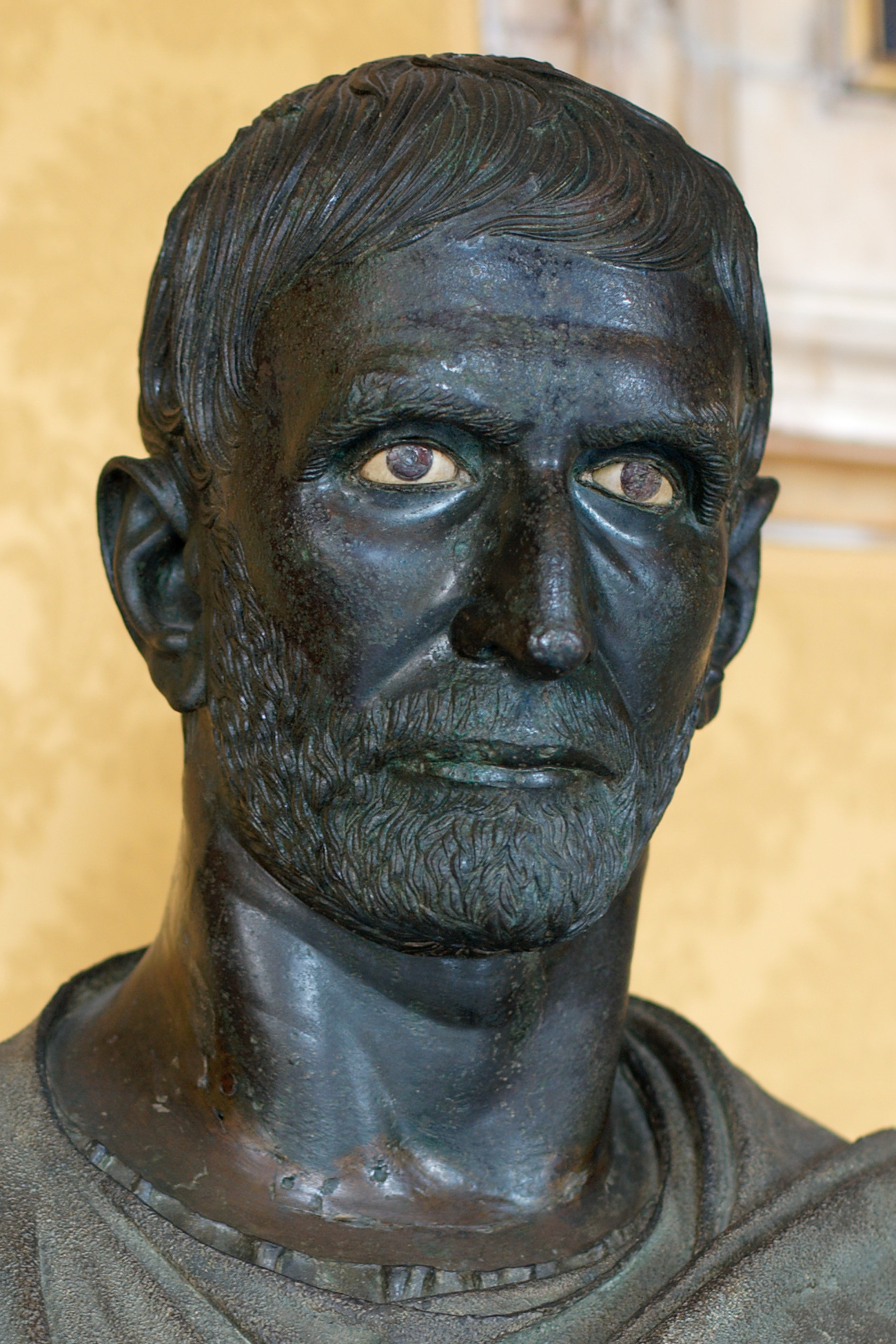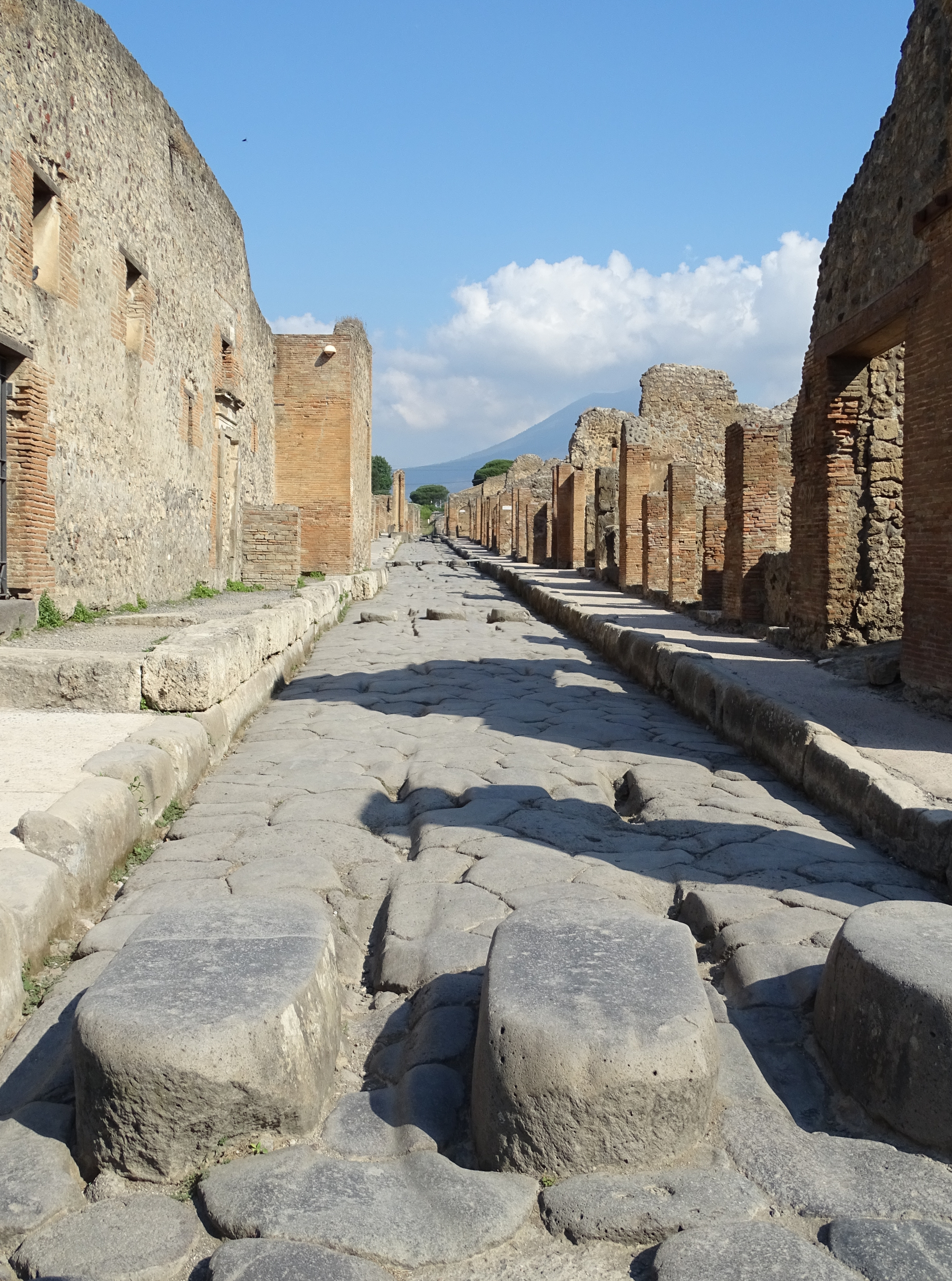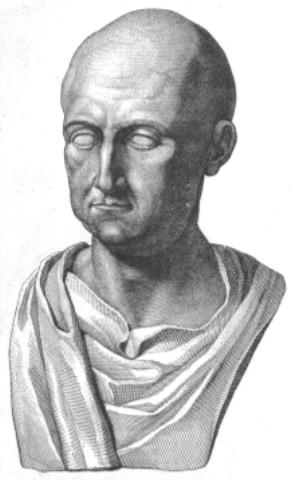|
Marcus Furius Camillus (consul AD 8)
Marcus Furius Camillus (c. 26 BC – after AD 18) was a Roman senator and a close friend of the emperor Tiberius. Despite being without previous military experience, he enjoyed several successes against the Numidian rebel Tacfarinas while serving as governor of Africa, and was even praised in public by the Emperor and awarded triumphal honours. The historian Tacitus, in his ''Annales'' (published AD 109), joked that Camillus subsequently lived invisibly enough to survive this great honour (an allusion to the endless series of executions of prominent senators on spurious treason charges under Tiberius). Early life He was a member of the gens Furia, whose origin had been in the Latin city of Tusculum. An early member of this family was Marcus Furius Camillus (c. 446 - 365 BC), who was known as the ''Second Founder of Rome'' for his victory over the Gauls during the Gallic siege of Rome. The family had declined over the centuries and by the time of Augustus they were relatively unim ... [...More Info...] [...Related Items...] OR: [Wikipedia] [Google] [Baidu] |
Tiberius
Tiberius Julius Caesar Augustus (; 16 November 42 BC – 16 March AD 37) was the second Roman emperor. He reigned from AD 14 until 37, succeeding his stepfather, the first Roman emperor Augustus. Tiberius was born in Rome in 42 BC. His father was the politician Tiberius Claudius Nero and his mother was Livia Drusilla, who would eventually divorce his father, and marry the future-emperor Augustus in 38 BC. Following the untimely deaths of Augustus' two grandsons and adopted heirs, Gaius and Lucius Caesar, Tiberius was designated Augustus' successor. Prior to this, Tiberius had proved himself an able diplomat, and one of the most successful Roman generals: his conquests of Pannonia, Dalmatia, Raetia, and (temporarily) parts of Germania laid the foundations for the empire's northern frontier. Early in his career, Tiberius was happily married to Vipsania, daughter of Augustus' friend, distinguished general and intended heir, Marcus Vipsanius Agrippa. They had a son, Dru ... [...More Info...] [...Related Items...] OR: [Wikipedia] [Google] [Baidu] |
Roman Republic
The Roman Republic ( la, Res publica Romana ) was a form of government of Rome and the era of the classical Roman civilization when it was run through public representation of the Roman people. Beginning with the overthrow of the Roman Kingdom (traditionally dated to 509 BC) and ending in 27 BC with the establishment of the Roman Empire, Rome's control rapidly expanded during this period—from the city's immediate surroundings to hegemony over the entire Mediterranean world. Roman society under the Republic was primarily a cultural mix of Latin and Etruscan societies, as well as of Sabine, Oscan, and Greek cultural elements, which is especially visible in the Roman Pantheon. Its political organization developed, at around the same time as direct democracy in Ancient Greece, with collective and annual magistracies, overseen by a senate. The top magistrates were the two consuls, who had an extensive range of executive, legislative, judicial, military, and religious powe ... [...More Info...] [...Related Items...] OR: [Wikipedia] [Google] [Baidu] |
Garamantes
The Garamantes ( grc, Γαράμαντες, translit=Garámantes; la, Garamantes) were an ancient civilisation based primarily in present-day Libya. They most likely descended from Iron Age Berber tribes from the Sahara, although the earliest known record of their existence dates to the fifth century BC. Little remains of their civilization, as their epigraphy is nearly indecipherable; much of what is known comes from contemporaneous Greek and Roman foreign accounts and modern archaeological findings. The Garamantes emerged as a major regional power in the mid-second century AD, establishing a kingdom that spanned roughly in the Fezzan region of southern Libya. Their growth and expansion rested on a complex and extensive qanat irrigation system (known as ''foggaras'' in Berber), which supported a strong agricultural economy and large population. They subsequently developed the first urban society in a major desert that was not centered on a river system; their largest town, Ga ... [...More Info...] [...Related Items...] OR: [Wikipedia] [Google] [Baidu] |
History Of Tacitus
History (derived ) is the systematic study and the documentation of the human activity. The time period of event before the invention of writing systems is considered prehistory. "History" is an umbrella term comprising past events as well as the memory, discovery, collection, organization, presentation, and interpretation of these events. Historians seek knowledge of the past using historical sources such as written documents, oral accounts, art and material artifacts, and ecological markers. History is not complete and still has debatable mysteries. History is also an academic discipline which uses narrative to describe, examine, question, and analyze past events, and investigate their patterns of cause and effect. Historians often debate which narrative best explains an event, as well as the significance of different causes and effects. Historians also debate the nature of history as an end in itself, as well as its usefulness to give perspective on the problems o ... [...More Info...] [...Related Items...] OR: [Wikipedia] [Google] [Baidu] |
Cinithian
Cinithians were an ancient Berber tribe of Roman North Africa, who occupied the area of modern Algeria. Several inscriptions bear testimony of their presence. From near the Roman town of Githis, in southern Tunisia, there is a second-century dedication to The Empire and Memmius Pacatus, who 'stood out among his people'. Here he is called a 'Cinithius'. It is believed that he was a leader of the tribe and his family went on to achieve senatorial rank. At the veteran colony of Sitifis there is another inscription that mentions the tribe of the Cinithians. They are also cited by Cornelius Tacitus as "...a nation by no means contemptible".Cornelius Tacitus Publius Cornelius Tacitus, known simply as Tacitus ( , ; – ), was a Roman historian and politician. Tacitus is widely regarded as one of the greatest Roman historians by modern scholars. The surviving portions of his two major works—the ..., The Annals and History of Tacitus (Talboys, 1839) p113. References {{Ber ... [...More Info...] [...Related Items...] OR: [Wikipedia] [Google] [Baidu] |
Gaetuli
Gaetuli was the Romanised name of an ancient Berber tribe inhabiting ''Getulia''. The latter district covered the large desert region south of the Atlas Mountains, bordering the Sahara. Other documents place Gaetulia in pre- Roman times along the Mediterranean coasts of what is now Algeria and Tunisia, and north of the Atlas. During the Roman period, according to Pliny the Elder, the Autololes Gaetuli established themselves south of the province of Mauretania Tingitana, in modern-day Morocco. The name Godala is hypothesized to be derived from the word Gaetuli. Region Getulia was the name given to an ancient district in the Maghreb, which in the usage of Roman writers comprised the nomadic Berber tribes of the southern slopes of the Aures Mountains and Atlas Mountains, as far as the Atlantic, and the oases in the northern part of the Sahara. The Gaetulian people were among the oldest inhabitants in northwestern Africa recorded in classical writings. They mainly occupied the ar ... [...More Info...] [...Related Items...] OR: [Wikipedia] [Google] [Baidu] |
Roman Road
Roman roads ( la, viae Romanae ; singular: ; meaning "Roman way") were physical infrastructure vital to the maintenance and development of the Roman state, and were built from about 300 BC through the expansion and consolidation of the Roman Republic and the Roman Empire. They provided efficient means for the overland movement of armies, officials, civilians, inland carriage of official communications, and trade goods. Roman roads were of several kinds, ranging from small local roads to broad, long-distance highways built to connect cities, major towns and military bases. These major roads were often stone-paved and metaled, cambered for drainage, and were flanked by footpaths, bridleways and drainage ditches. They were laid along accurately surveyed courses, and some were cut through hills, or conducted over rivers and ravines on bridgework. Sections could be supported over marshy ground on rafted or piled foundations.Corbishley, Mike: "The Roman World", page 50. Warwick Pr ... [...More Info...] [...Related Items...] OR: [Wikipedia] [Google] [Baidu] |
Guerrilla Warfare
Guerrilla warfare is a form of irregular warfare in which small groups of combatants, such as paramilitary personnel, armed civilians, or irregulars, use military tactics including ambushes, sabotage, raids, petty warfare, hit-and-run tactics, and mobility, to fight a larger and less-mobile traditional military. Although the term "guerrilla warfare" was coined in the context of the Peninsular War in the 19th century, the tactical methods of guerrilla warfare have long been in use. In the 6th century BC, Sun Tzu proposed the use of guerrilla-style tactics in '' The Art of War''. The 3rd century BC Roman general Quintus Fabius Maximus Verrucosus is also credited with inventing many of the tactics of guerrilla warfare through what is today called the Fabian strategy. Guerrilla warfare has been used by various factions throughout history and is particularly associated with revolutionary movements and popular resistance against invading or occupying armies. Guerrilla ... [...More Info...] [...Related Items...] OR: [Wikipedia] [Google] [Baidu] |
Numidia
Numidia ( Berber: ''Inumiden''; 202–40 BC) was the ancient kingdom of the Numidians located in northwest Africa, initially comprising the territory that now makes up modern-day Algeria, but later expanding across what is today known as Tunisia, Libya, and some parts of Morocco. The polity was originally divided between the Massylii in the east and the Masaesyli in the west. During the Second Punic War (218–201 BC), Masinissa, king of the Massylii, defeated Syphax of the Masaesyli to unify Numidia into one kingdom. The kingdom began as a sovereign state and later alternated between being a Roman province and a Roman client state. Numidia, at its largest extent, was bordered by Mauretania to the west, at the Moulouya River, Africa Proconsularis to the east, the Mediterranean Sea to the north, and the Sahara to the south. It was one of the first major states in the history of Algeria and the Berbers. History Independence The Greek historians referred to these peopl ... [...More Info...] [...Related Items...] OR: [Wikipedia] [Google] [Baidu] |
Africa (Roman Province)
Africa Proconsularis was a Roman province on the northern African coast that was established in 146 BC following the defeat of Carthage in the Third Punic War. It roughly comprised the territory of present-day Tunisia, the northeast of Algeria, and the coast of western Libya along the Gulf of Sirte. The territory was originally inhabited by Berber people, known in Latin as ''Mauri'' indigenous to all of North Africa west of Egypt; in the 9th century BC, Phoenicians built settlements along the Mediterranean Sea to facilitate shipping, of which Carthage rose to dominance in the 8th century BC until its conquest by the Roman Republic. It was one of the wealthiest provinces in the western part of the Roman Empire, second only to Italy. Apart from the city of Carthage, other large settlements in the province were Hadrumetum (modern Sousse, Tunisia), capital of Byzacena, and Hippo Regius (modern Annaba, Algeria). History Rome's first province in northern Africa was establishe ... [...More Info...] [...Related Items...] OR: [Wikipedia] [Google] [Baidu] |
Proconsul
A proconsul was an official of ancient Rome who acted on behalf of a consul. A proconsul was typically a former consul. The term is also used in recent history for officials with delegated authority. In the Roman Republic, military command, or ''imperium'', could be exercised constitutionally only by a consul. There were two consuls at a time, each elected to a one-year term. They could not normally serve two terms in a row. If a military campaign was in progress at the end of a consul's term, the consul in command might have his command prorogued, allowing him to continue in command. This custom allowed for continuity of command despite the high turnover of consuls. In the Roman Empire, proconsul was a title held by a civil governor and did not imply military command. In modern times, various officials with notable delegated authority have been referred to as proconsuls. Studies of leadership typically divide leaders into policymakers and subordinate administrators. The proconsu ... [...More Info...] [...Related Items...] OR: [Wikipedia] [Google] [Baidu] |
Roman Governor
A Roman governor was an official either elected or appointed to be the chief administrator of Roman law throughout one or more of the many provinces constituting the Roman Empire. The generic term in Roman legal language was '' Rector provinciae,'' regardless of the specific titles, which also reflects the province's intrinsic and strategic status, and corresponding differences in authority. By the time of the early Empire, two types of provinces existed—senatorial and imperial—and several types of governor would emerge. Only ''proconsuls'' and ''propraetors'' fell under the classification of promagistrate. Duties of the governor The governor was the province's chief judge. He had the sole right to impose capital punishment, and capital cases were normally tried before him. To appeal a governor's decision necessitated travelling to Rome and presenting one's case before either the ''praetor urbanus'', or even the Emperor himself, an expensive, and thus rare, process. An appe ... [...More Info...] [...Related Items...] OR: [Wikipedia] [Google] [Baidu] |



.jpg)





